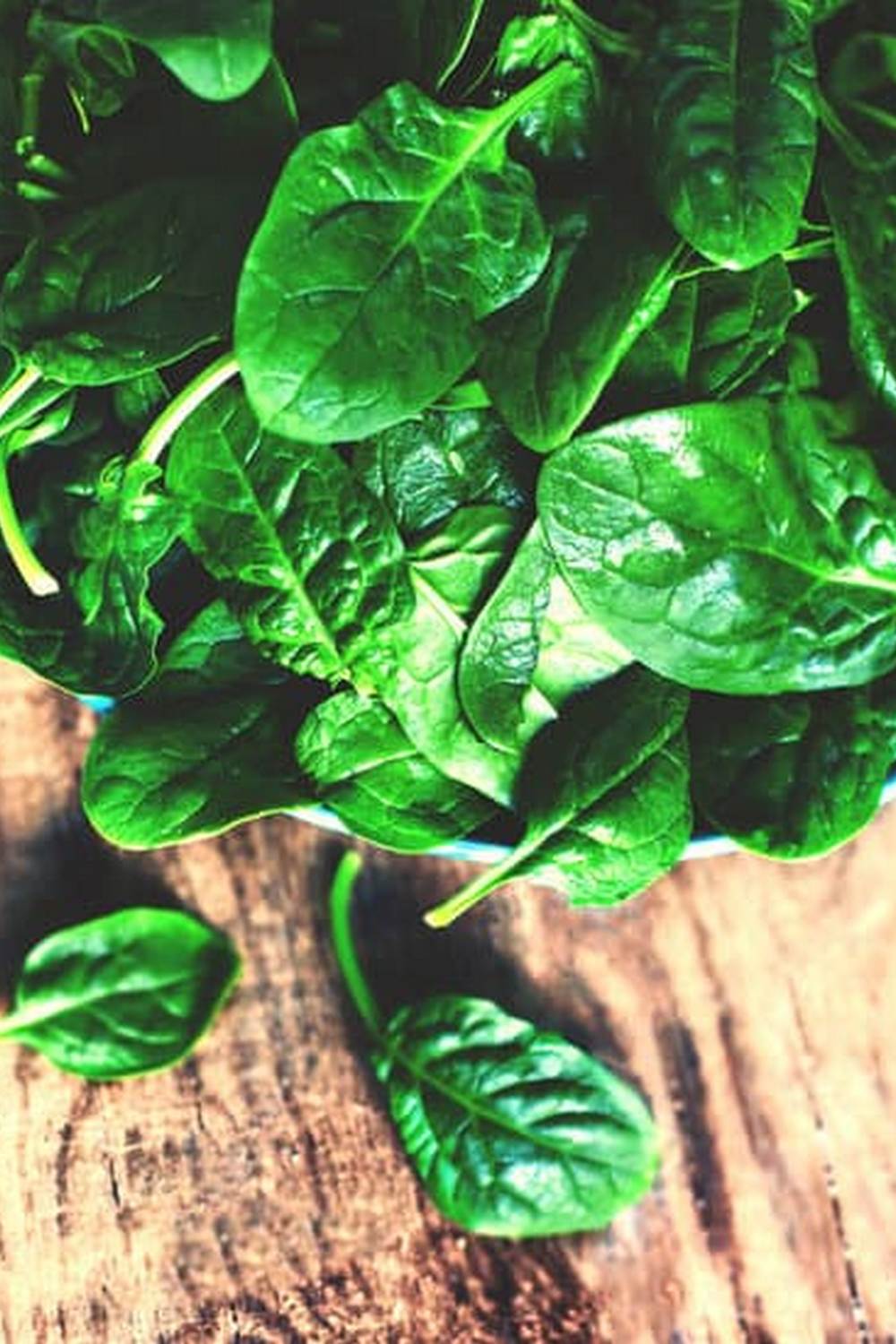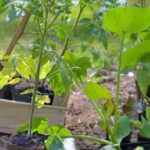Are you interested in learning how to start vegetable gardening? Whether you have a green thumb or are a complete novice, cultivating your own vegetables can be a rewarding and enjoyable experience. In this article, we will provide you with the essential knowledge and tips to help you start your journey into vegetable gardening. From the benefits of growing your own produce to the rewards of enjoying a bountiful harvest, we will cover it all.
One of the first steps in starting a successful vegetable garden is choosing the right location for it. The right amount of sunlight, proper drainage, and access to water are essential factors that will contribute to the success of your garden. Additionally, having the essential tools and supplies such as a shovel, rake, watering can, and high-quality soil is crucial for preparing and maintaining your garden.
As we delve deeper into this article, we will share expert advice on selecting the best vegetables to grow based on your climate and the specifics of preparing the soil for planting. Furthermore, our comprehensive guide will cover planting techniques, caring for your garden, addressing common pests and diseases that may affect your crops, as well as harvesting and enjoying the fruits of your labor. Get ready to embark on an exciting journey into vegetable gardening.
Choosing the Right Location for Your Vegetable Garden
When starting a vegetable garden, one of the most important considerations is choosing the right location for it. The success of your garden will largely depend on the amount of sunlight, quality of soil, and accessibility to water. Below are some key factors to consider when selecting the perfect location for your vegetable garden.
Sunlight and Shade
Vegetables generally require at least 6-8 hours of direct sunlight daily to thrive. When choosing a location for your vegetable garden, observe the area throughout the day to determine how much sunlight it receives. Keep in mind that different vegetables may have varying sunlight requirements, so a mix of sunny and shaded areas may be beneficial.
Soil Quality
The soil quality is another crucial factor when choosing a location for your vegetable garden. Conduct a soil test to determine its pH level and nutrient content. Look for well-draining soil with good fertility, as this will provide an optimal growing environment for your vegetables.
Accessibility to Water
Lastly, consider the accessibility of water in the chosen location. Vegetables need consistent watering, especially during dry spells or hot weather. Ensure that your chosen spot has easy access to a water source such as a hose or irrigation system to keep your plants adequately hydrated.
By carefully considering these factors when selecting the right location for your vegetable garden, you will set yourself up for success in growing healthy and abundant vegetables.
Essential Tools and Supplies for Vegetable Gardening
When starting a vegetable garden, it’s important to have the right tools and supplies on hand to ensure success. Having the essential items will make the gardening process easier and more enjoyable. Here are some of the must-have tools and supplies for anyone looking to start their own vegetable garden.
Gardening Tools
One of the first things you’ll need for your vegetable garden is a set of basic gardening tools. This includes a trowel for planting, weeding, and soil preparation, a hand rake for clearing debris and smoothing soil, and a garden hoe for breaking up soil and removing weeds. A sturdy pair of gardening gloves is also essential to protect your hands while working in the garden.
Irrigation Supplies
Proper watering is crucial for the health of your vegetable plants. Investing in a good quality watering can or hose with an adjustable nozzle will allow you to easily water your plants without damaging them. Consider installing a drip irrigation system for larger gardens to ensure consistent and efficient watering.
Fertilizers and Amendments
To give your vegetables the best chance at success, it’s important to feed them with appropriate fertilizers and soil amendments. Organic fertilizers like compost or aged manure can provide essential nutrients to the soil, while amendments like perlite or vermiculite can improve soil drainage and texture.
By having these essential tools and supplies on hand, you’ll be well-equipped to start your own successful vegetable garden. As you continue learning how to start vegetable gardening successfully, consider investing in additional tools or supplies based on your specific needs and preferences.
Selecting the Best Vegetables to Grow in Your Climate
When starting a vegetable garden, it’s crucial to consider the climate of your location and choose the right vegetables that will thrive in your specific conditions. One of the most important factors to consider when selecting which vegetables to grow is the average temperature and length of your growing season. Certain vegetables, such as tomatoes and peppers, require a longer growing season with warmer temperatures, while others, like lettuce and spinach, prefer cooler weather.
Another consideration when choosing which vegetables to grow in your climate is the amount of sunlight your garden receives. Some vegetables, like tomatoes and peppers, need full sun to reach their full potential, while others, like leafy greens and root vegetables, can tolerate more shade. Take note of the sun exposure in different areas of your garden to determine which vegetables will thrive in each location.
It’s also important to research the specific soil conditions that certain vegetables require for optimal growth. For example, some vegetables prefer well-draining soil with higher fertility levels, while others can tolerate heavier or more acidic soils. Understanding the soil needs of different vegetables will help you select the best varieties for your specific garden.
Lastly, consider any unique microclimates within your garden that may affect certain areas differently than others. A microclimate could be a spot that gets more or less wind exposure, or an area near a building that retains more heat. Understanding these variations will help you make informed decisions about which vegetables to plant where in order to maximize their growth and productivity.
Preparing the Soil for Planting
When it comes to starting a vegetable garden, one of the most important steps is preparing the soil for planting. The quality of your soil will directly impact the health and productivity of your vegetable plants. Here are some essential tips for getting your soil ready for planting:
- Conduct a Soil Test: Before you start any soil preparation, it’s a good idea to conduct a soil test to determine its pH level and nutrient content. This will help you understand what adjustments or amendments need to be made to optimize the soil for growing vegetables.
- Remove Weeds and Debris: Clear the area where you plan to plant your vegetables by removing any weeds, rocks, or debris. This will create a clean and fertile space for your plants to thrive.
- Amend the Soil: Based on the results of your soil test, you may need to add organic matter, such as compost or well-rotted manure, to improve the soil’s texture and fertility. This will provide essential nutrients for your vegetable plants.
In addition to these steps, it’s important to consider the drainage of your soil. Poorly drained soil can lead to waterlogging and root rot in your vegetable plants. Adding organic matter can also help improve drainage.
By taking the time to properly prepare your soil for planting, you are setting the stage for a successful vegetable garden that will yield healthy and bountiful harvests.
Remember that preparing the soil is just one step in the process of starting a vegetable garden. The next crucial steps include selecting and planting the right vegetables, as well as ongoing care and maintenance. With proper preparation and attention to detail, you can set yourself up for a rewarding gardening experience.
Planting and Caring for Your Vegetable Garden
Once you have chosen the right location for your vegetable garden and gathered all the essential tools and supplies, it’s time to start planting and caring for your garden. The first step is to decide whether you want to start from seeds or seedlings. Starting from seeds can be more cost-effective, but seedlings may provide a quicker harvest.
When planting, make sure to space your plants properly to allow room for growth. Each vegetable has its own spacing requirements, so be sure to research this before planting. Watering is also crucial for the success of your vegetable garden. Most vegetables require at least 1 inch of water per week, either from rainfall or irrigation.
As your plants grow, it’s important to regularly check for weeds and remove them promptly. Weeds compete with your vegetables for water and nutrients, so keeping them under control is essential. Additionally, consider applying mulch around your plants to help retain moisture in the soil and prevent weed growth.
One common mistake among new vegetable gardeners is not keeping up with pest control. Regularly inspect your plants for any signs of pests or diseases and take appropriate action if needed. There are many natural remedies that can be used to keep pests at bay without resorting to harmful chemicals.
| Planting Tips | Caring Tips |
|---|---|
| Proper spacing enhances growth | Regularly check for weeds |
| Consider starting from seeds or seedlings | Apply mulch to retain moisture |
| Watering requirements vary by vegetable type |
Dealing With Common Pests and Diseases
One of the biggest challenges that vegetable gardeners face is dealing with common pests and diseases that can wreak havoc on their crops. However, with the right knowledge and proactive measures, it is possible to minimize the impact of these threats on your garden.
First and foremost, it’s important to familiarize yourself with the common pests and diseases that are prevalent in your area. This will help you identify any potential issues early on and take action before they become a major problem. There are a variety of resources available, such as local gardening clubs, extension offices, and online forums, where you can learn about the specific threats to your region.
When it comes to preventing and managing pest and disease outbreaks in your vegetable garden, practicing good cultural techniques is key. This includes maintaining proper plant spacing, providing adequate air circulation, watering at the base of plants to avoid leaf wetness, and regularly inspecting your plants for any signs of trouble. Additionally, using natural predators or barriers like row covers can help protect your crops from harmful insects.
In the event that pests or diseases do make their way into your garden, there are a number of natural and organic methods for controlling them. From hand-picking insects off plants to using insecticidal soaps or neem oil sprays for pest control, there are effective strategies for managing these issues without resorting to harsh chemicals.
It’s also important to remove any diseased plants or affected foliage promptly to prevent the spread of disease throughout the garden. By staying vigilant and implementing proactive measures, you can successfully navigate common pests and diseases in your vegetable garden while maintaining a healthy harvest.
Harvesting and Enjoying the Fruits of Your Labor
Once you have successfully planted and cared for your vegetable garden, it is time to reap the rewards of your hard work. Harvesting fresh produce from your own garden not only provides a sense of satisfaction but also ensures that you and your family have access to healthy, organic vegetables. Here are some tips on how to harvest and enjoy the fruits of your labor:
1. Harvesting at the Right Time: One of the most important aspects of vegetable gardening is knowing when to harvest your crops. Different vegetables have different harvest times, so it’s essential to research each type of vegetable you are growing. Generally, most vegetables are best harvested when they have reached full maturity and are at their peak flavor.
2. Enjoying Your Fresh Produce: There is nothing quite like enjoying a meal made with freshly harvested vegetables from your own garden. Whether you incorporate them into salads, stir-fries, or simply enjoy them raw, homegrown vegetables have a taste and freshness that store-bought produce cannot compete with.
3. Storing and Preserving Your Harvest: If you find yourself with an abundant harvest, there are various methods for preserving your vegetables for future use. Canning, freezing, pickling, or even dehydrating are all effective ways to extend the shelf life of your homegrown produce.
Harvesting and enjoying the fruits of your labor is one of the most rewarding aspects of vegetable gardening. By following these tips, you can fully enjoy the bountiful harvest from your garden while also ensuring that none of it goes to waste.
Conclusion
In conclusion, starting a vegetable garden can be a rewarding and fulfilling experience. The benefits of growing your own vegetables are numerous, from having access to fresh and organic produce to enjoying the physical activity and mental relaxation that comes with tending to a garden. By following the tips provided in this article, new vegetable gardeners can set themselves up for success and enjoy a bountiful harvest.
One of the most important factors in successfully starting a vegetable garden is choosing the right location. By selecting an area with plenty of sunlight, good drainage, and access to water, you can provide your plants with the best possible environment to thrive. Additionally, taking the time to prepare the soil by removing any weeds or debris and incorporating organic matter will help create optimal growing conditions for your vegetables.
As new vegetable gardeners embark on this exciting journey, it’s essential to have the necessary tools and supplies on hand. From basic hand tools like trowels and pruners to irrigation equipment and fertilizers, having these items readily available will make gardening tasks easier and more efficient.
Furthermore, selecting the best vegetables suited for your specific climate and understanding how to care for them will ensure a successful harvest. With patience, dedication, and the knowledge gained from this article, anyone can learn how to start vegetable gardening and enjoy the satisfaction of growing their own food.
Frequently Asked Questions
What Is the Best Way to Start a Vegetable Garden?
The best way to start a vegetable garden is by choosing a suitable location with adequate sunlight and good soil drainage. It’s important to properly prepare the soil, either by tilling or using raised beds, and to consider the climate and growing season in your area.
What Vegetables Should a First Time Gardener?
For a first time gardener, it’s best to start with easy-to-grow vegetables such as tomatoes, lettuce, carrots, radishes, zucchini, and green beans. These vegetables are relatively low-maintenance and can be grown successfully by beginners.
What Vegetables Are Good for Beginners to Grow?
Good vegetables for beginners to grow include leafy greens like spinach and kale, root vegetables such as carrots and radishes, and herbs like basil and parsley. These plants are generally resilient and require minimal attention, making them ideal for those new to gardening.

If you’re looking to get into vegetable gardening, or are just looking for some tips on how to make your current garden better, then you’ve come to the right place! My name is Ethel and I have been gardening for years. In this blog, I’m going to share with you some of my best tips on how to create a successful vegetable garden.





